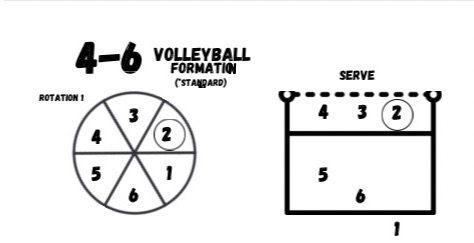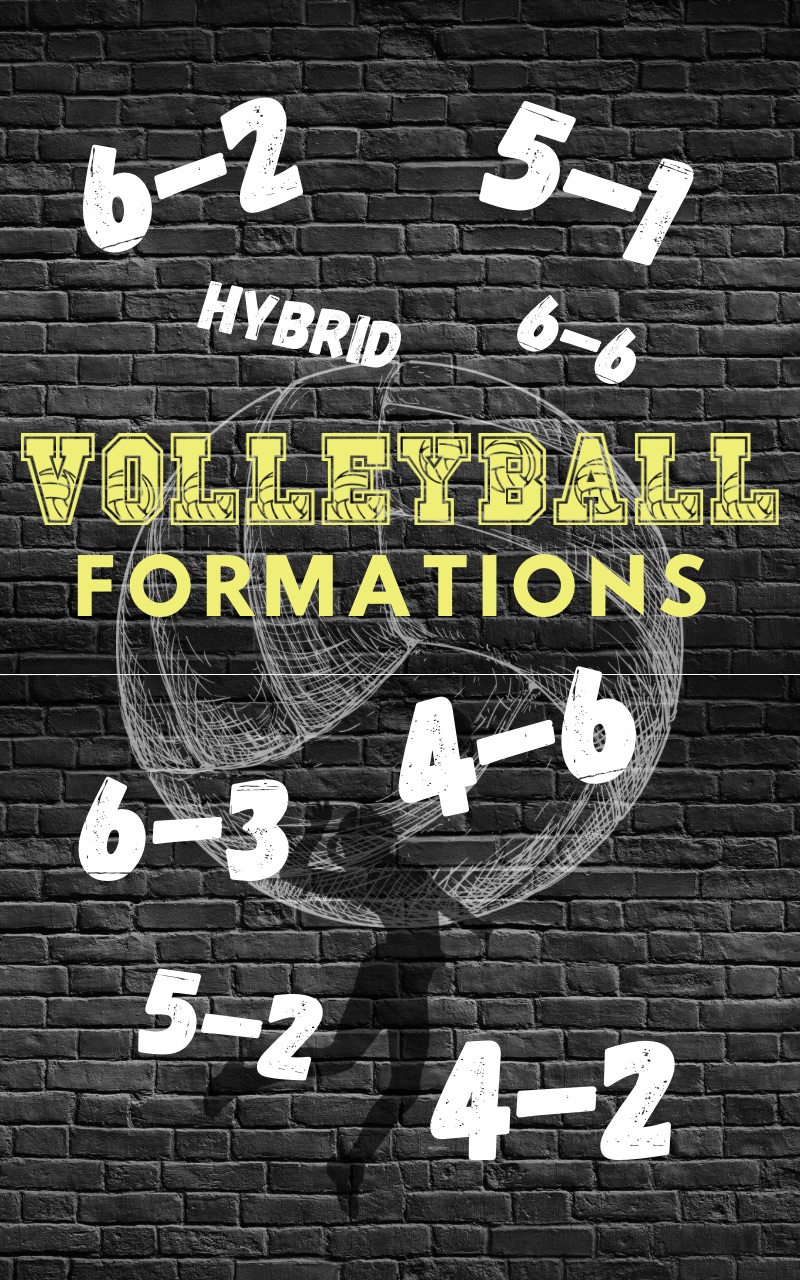
|
Different Volleyball Offenses
| |
|
[BACK]
4-6 The 4-6 offense in volleyball is a specialized system primarily designed for youth and amateur players. In this formation, everyone is a setter when they get to right front in their rotation. With four front-row attackers (two front row hitters each rotation) and six back-row defenders it creates a defense-oriented setup. The 4-6 system focuses on court coverage, ball control, and defense, making it ideal for teams with fewer experienced hitters. By maximizing defensive positions, the 4-6 formation aims to minimize the opposing team’s attacks while relying on strong serving and accurate passing to transition into offensive opportunities. NOTE: This is typically a Developmental formation used for youth volleyball as there is minimal setter transition and the hitters are in front of the setter. rotation 1 example: 
For more information and diagrams for each position on each rotation in a "6-2" volleyball offense Click here for our ebook about "Volleyball Rotations" The 4-6 offense in volleyball is a specialized system primarily used in youth and amateur play. Here are its advantages and disadvantages: Advantages of the 4-6 Offense: 1. Simplicity: The 4-6 system is straightforward, making it suitable for youth and less experienced players who are developing their skills. 2. Balanced Defense: The configuration provides a strong defensive foundation with six back-row players, ensuring good court coverage. 3. Ball Control Focus: Teams using the 4-6 often prioritize ball control, passing, and defense, which are critical aspects of the game. 4. Emphasis on Transition Play: The offense excels in transition play as all six players can contribute to both attacking and defending. Disadvantages of the 4-6 Offense: 1. Limited Attacking Options: With only four front-row attackers, the offense can become predictable for opponents, who may focus on blocking and defense. 2. Lack of Specialized Setters: The 4-6 system may lack dedicated setters, which can affect the quality and consistency of sets. 3. Reduced Offensive Power: The limited number of attackers in the front row can reduce the team’s offensive power and make it more challenging to score points. 4. Positional Rigidity: The 4-6 system may restrict the development of versatile players, as players tend to specialize in either attacking or defending. 5. Limited Hitting Choices: The system provides fewer hitting options, as there are only four front-row players who can attack. 6. Blocking Challenges: The 4-6 system may struggle to effectively defend against taller or more skilled opponents, particularly in blocking. 7. Reduced Strategic Diversity: The focus on ball control and defense can limit the range of offensive strategies, making the game less dynamic. The 4-6 offense suits specific situations, particularly in youth and amateur play, where skill development, ball control, and defense are prioritized. However, it comes with limitations in terms of offensive diversity and specialized positions that should be carefully considered when implementing this system. For more information and diagrams for each position on each rotation in a "6-2" volleyball offense Click here for our ebook about "Volleyball Rotations" |

Amazon associate  Purchase Ebook on Amazon Purchase Ebook on Amazon
|
Volleyball techniques Volleyball strategies Volleyball drills Volleyball skills Volleyball fundamentals Volleyball tips Volleyball training Volleyball coaching Volleyball playbook Volleyball exercises Volleyball equipment Volleyball gear Volleyball practice Volleyball coaching tips Volleyball playing tips Volleyball tutorials Volleyball lessons Volleyball techniques for beginners Volleyball skills development Volleyball coaching tools Volleyball teaching aids Volleyball improvement tips Volleyball tactics Volleyball game strategies Volleyball mental preparation Volleyball injury prevention Volleyball nutrition tips Volleyball warm-up routines Volleyball conditioning exercises








